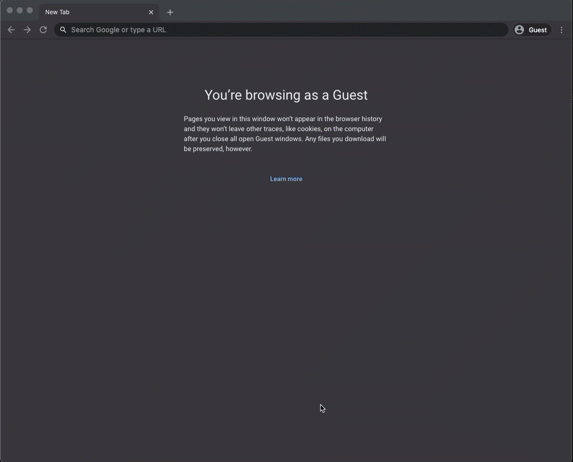InSpec-GCP version 1.0 is now generally available, and two new Chef InSpec™ profiles have been released under an open source software license. The InSpec profiles contain controls for the
GCP Center for Internet Security (CIS) Benchmark version 1.1.0 and the
Payment Card Industry Data Security Standard (PCI DSS) version 3.2.1.
The Cloud Security Challenge
Developers are embracing automated continuous integration and continuous delivery (CI/CD), committing many application and infrastructure changes frequently. But centralized security teams can't review every application and infrastructure change. Those teams might have to block deployments (which decreases velocity and undermines continuous delivery) or review changes in production, where misconfigurations are more harmful and changes are more expensive.
Security reviews need to "shift left,” earlier in the software development lifecycle. Security teams likewise need to shift their own efforts to defining policies and providing tools to automate how compliance is verified. When developers adopt these tools, security and compliance checks become part of CI/CD, in a similar fashion to unit, functional, and integration tests, and thus become a normal part of the development workflow. Empowering developers to participate in this process means organizations can achieve continuous compliance. This also reinforces the mindset that
security is everyone's responsibility.
What is InSpec
InSpec is a popular DevSecOps framework that checks the configuration state of resources in virtual machines and containers, on cloud providers such as GCP, AWS, and Azure. InSpec's lightweight nature, approachable domain-specific language, and extensibility make it a valuable tool for:
- Expressing compliance policies as code
- Enabling development teams to add tests that assess their applications' compliance with security policies before pushing changes to build and release pipelines
- Automating compliance verification in CI/CD pipelines and as part of the release process
- Unifying compliance assessments across multiple cloud providers and on-premises environments
InSpec for GCP and compliance profiles
The
InSpec GCP resource pack 1.0 provides a consistent way to audit GCP resources. This release unifies the user experience by adding consistent behavior between resources and documentation for available fields. This resource pack also adds support for GCP endpoints that let you audit fields that are in beta (for example, GKE cluster pod security policy configuration).
You can use the GCP CIS Benchmark and the PCI DSS InSpec profiles to assess compliance with CIS and PCI DSS policies. CIS Benchmarks are configuration guides used by governments, businesses, industry, and academia. We strongly recommend configuring the workloads to meet or exceed these standards. PCI DSS is required for all organizations that accept or process credit card payments. The
Terraform PCI Starter, coupled with the PCI InSpec profile, allows deployment of PCI-compliant environments and verifies their ongoing compliance.
This work is released under an open source license and we look forward to your feedback and contributions.
Validating PCI DSS and CIS compliance in infrastructure build pipelines
You can use InSpec to validate infrastructure deployments for compliance with standards such as PCI DSS and CIS. An automated validation process of new builds is important to detect insecure and non-compliant configurations as early as possible while minimizing the impact on developer agility.
With
Cloud Build you can create CI pipelines for infrastructure-as-code deployments. You can run InSpec as an additional build step against resources in the GCP project to detect compliance violations in the target infrastructure. While this method doesn't prevent non-compliant build configurations, it does detect compliance issues, fail the build execution, and log the error in Cloud Logging. Cloud Build publishes build messages to a Cloud Pub/Sub topic, which can trigger a Cloud Function to integrate with appropriate alerting systems in case of a failed build. To prevent non-compliant infrastructure in a production environment, run the pipeline in a staging environment before promoting the content to production.
Here is an example pipeline definition for Cloud Build, using InSpec, to validate a project against the PCI guidelines. To run the PCI profile from a container inside a Cloud Build pipeline, clone the Git repository
Payment Card Industry Data Security Standard (PCI DSS) version 3.2.1, build the Docker container from the root directory of the repository using the
Dockerfile, and push the image to the Google Container Registry. The Cloud Build pipeline will store InSpec reports in a predefined bucket in json and html formats.
Here's an example for executing the PCI DSS InSpec profile as a step in a Cloud Build pipeline:
#...Previous execution steps
#
- id: 'Run PCI Profile on in-scope project'
waitFor: ['Write InSpec input file']
name: gcr.io/${_GCR_PROJECT_ID}/inspec-gcp-pci-profile:v3.2.1-3
entrypoint: '/bin/sh'
args:
- '-c'
- |
inspec exec /share/. -t gcp:// \
--input-file /workspace/inputs.yml \
--reporter cli json:/workspace/pci_report.json \
html:/workspace/pci_report.html | tee out.jsonNote that in this example a previous execution step writes all required input parameters into the file /workspace/inputs.yml to make them available to the InSpec run. A
CI/CD pipeline has been implemented for the
PCI-GKE-Blueprint using Cloud Build and can be referenced as an example.
Try it yourself
Ready to try InSpec? Use this Cloud Shell Walkthrough to quickly install InSpec in your Cloud Shell instance and scan infrastructure in your GCP projects against the CIS Benchmark:
Chances are that in the walkthrough the InSpec scan detected some misconfigurations in your project.
As a developer of the project, you now know how to quickly scan your deployments, and you can begin to learn more about configuring your resources securely. Our
Cloud Foundation Toolkit provides Terraform and Deployment Manager templates for best-practice configurations of your projects and underlying resources.
Most large organizations have platform teams that can adopt our Cloud Foundation Toolkit templates, which automate well-configured resource provisioning, and make those available to their developers. These organizations can also include InSpec testing steps in their CI/CD pipelines to provide early feedback to developers and to prevent misconfigured resources from getting released to Production.
By Bakh Inamov – Security and Compliance Specialist Engineer, Sam Levenick – Software Engineer, and Konrad Schieban – Infrastructure Cloud Consultant



